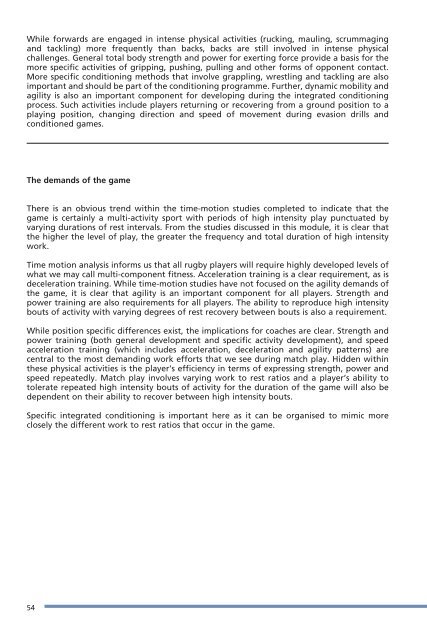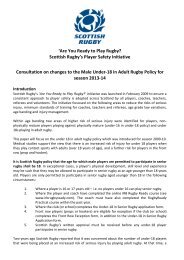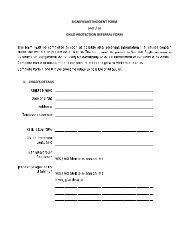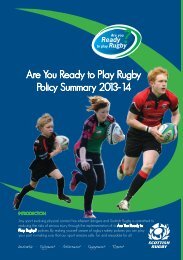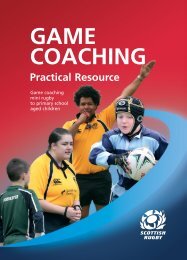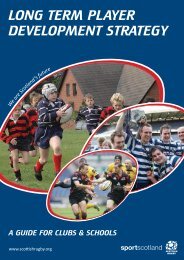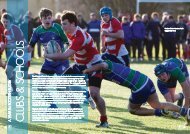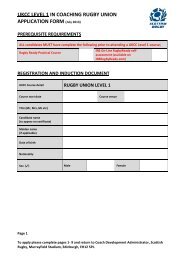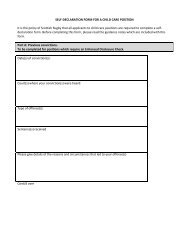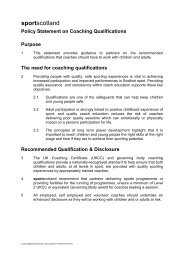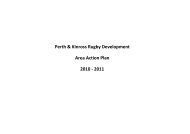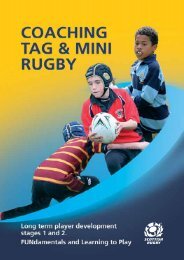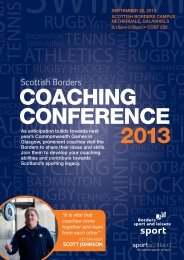LTPDst3cover.qxd (Page 1) - Scottish Rugby Union
LTPDst3cover.qxd (Page 1) - Scottish Rugby Union
LTPDst3cover.qxd (Page 1) - Scottish Rugby Union
- No tags were found...
You also want an ePaper? Increase the reach of your titles
YUMPU automatically turns print PDFs into web optimized ePapers that Google loves.
While forwards are engaged in intense physical activities (rucking, mauling, scrummagingand tackling) more frequently than backs, backs are still involved in intense physicalchallenges. General total body strength and power for exerting force provide a basis for themore specific activities of gripping, pushing, pulling and other forms of opponent contact.More specific conditioning methods that involve grappling, wrestling and tackling are alsoimportant and should be part of the conditioning programme. Further, dynamic mobility andagility is also an important component for developing during the integrated conditioningprocess. Such activities include players returning or recovering from a ground position to aplaying position, changing direction and speed of movement during evasion drills andconditioned games.The demands of the gameThere is an obvious trend within the time-motion studies completed to indicate that thegame is certainly a multi-activity sport with periods of high intensity play punctuated byvarying durations of rest intervals. From the studies discussed in this module, it is clear thatthe higher the level of play, the greater the frequency and total duration of high intensitywork.Time motion analysis informs us that all rugby players will require highly developed levels ofwhat we may call multi-component fitness. Acceleration training is a clear requirement, as isdeceleration training. While time-motion studies have not focused on the agility demands ofthe game, it is clear that agility is an important component for all players. Strength andpower training are also requirements for all players. The ability to reproduce high intensitybouts of activity with varying degrees of rest recovery between bouts is also a requirement.While position specific differences exist, the implications for coaches are clear. Strength andpower training (both general development and specific activity development), and speedacceleration training (which includes acceleration, deceleration and agility patterns) arecentral to the most demanding work efforts that we see during match play. Hidden withinthese physical activities is the player’s efficiency in terms of expressing strength, power andspeed repeatedly. Match play involves varying work to rest ratios and a player’s ability totolerate repeated high intensity bouts of activity for the duration of the game will also bedependent on their ability to recover between high intensity bouts.Specific integrated conditioning is important here as it can be organised to mimic moreclosely the different work to rest ratios that occur in the game.54


